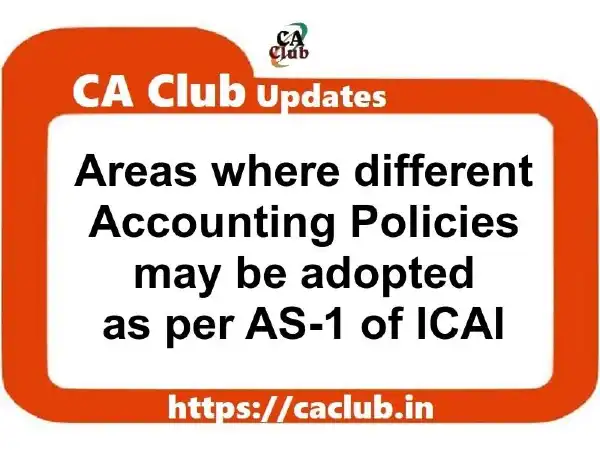In recent years, the number of acceptable alternative accounting treatments for various situations, particularly in corporate enterprises, has significantly decreased. This is due to the unification approach of various accounting standards of ICAI (Institute of Chartered Accountants of India), combined with the efforts of the government, regulators, and progressive managements. This unification project has the potential to expand further and will continue to standardize accounting procedures. However, it is still essential to understand the concept of alternative accounting treatments and how they are regulated.
What are Alternative Accounting Treatments?
Alternative accounting treatments are different methods of accounting for the same transaction or event. These alternative treatments arise when the accounting standards or principles permit more than one method to account for a specific transaction or event. For instance, the methods of depreciation, depletion, and amortization can be used differently by different enterprises, based on their unique conditions.
The Unification Project and its Impact
The unification project of ICAI has resulted in a decrease in the number of acceptable alternative accounting treatments, particularly in corporate enterprises. This unification approach aims to bring uniformity in accounting standards and eliminate the use of different methods for the same transaction or event. This standardization project will continue to expand, and it will further reduce the use of alternative accounting treatments.
The unification project has had a significant impact on accounting procedures, and it has been successful in bringing about a positive change. It has improved the quality of financial reporting and transparency in the financial statements of businesses.
AS-1 of ICAI and Disclosure of Accounting Policies
AS-1 of ICAI deals with the disclosure of accounting policies. It requires enterprises to disclose their accounting policies in the financial statements. This disclosure enables the users of financial statements to understand the basis of accounting and the methods used to prepare the financial statements.
AS-1 of ICAI provides examples of areas where different accounting policies may be adopted by different enterprises, based on their unique conditions. These areas include:
Methods of Depreciation, Depletion, and Amortization
Enterprises can use different methods of depreciation, depletion, and amortization for the same asset.
Treatment of Expenditure During Construction
Enterprises can choose to capitalize or expense the expenditure incurred during the construction of an asset.
Conversion or Translation of Foreign Currency Items
Enterprises can use different exchange rates for the conversion or translation of foreign currency items.
Valuation of Inventories
Enterprises can use different methods for the valuation of inventories, such as FIFO (First-in-First-Out) or LIFO (Last-in-First-Out).
Treatment of Goodwill
Enterprises can use different methods for the treatment of goodwill, such as amortization or impairment.
Valuation of Investments
Enterprises can use different methods for the valuation of investments, such as the cost or market value.
Treatment of Retirement Benefits
Enterprises can use different methods for the treatment of retirement benefits, such as defined benefit or defined contribution plans.
Recognition of Profit on Long-term Contracts
Enterprises can use different methods for the recognition of profit on long-term contracts, such as percentage of completion or completed contract method.
Valuation of Fixed Assets
Enterprises can use different methods for the valuation of fixed assets, such as historical cost or fair value.
Treatment of Contingent Liabilities
Enterprises can use different methods for the treatment of contingent liabilities, such as recognition or disclosure.
It is important to note that the list of examples provided in AS-1 of ICAI is not exhaustive, and enterprises may use different accounting treatments for other transactions or events as well.
Conclusion
In conclusion, alternative accounting treatments are different methods of accounting for the same transaction or event. The unification approach of ICAI has resulted in a decrease in the use of alternative accounting treatments, and the standardization project will continue to expand. AS-1 of ICAI requires enterprises to disclose their accounting policies, and it provides examples of areas where different accounting policies may be adopted by different enterprises. It is essential for businesses to understand the concept of alternative accounting treatments and the regulations surrounding them. By doing so, they can ensure transparency in their financial reporting and improve the quality of their financial statements.
AS-1 Related Posts:
Key Considerations in Selection of Accounting Policies as per AS-1
Nature of Accounting Policies and Disclosure Requirements of AS-1
Alternative Accounting Treatments and AS-1 of ICAI
Fundamental Accounting Assumptions as per AS-1
